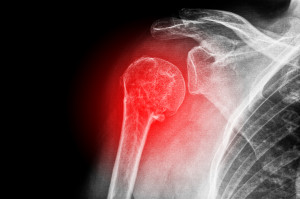Frozen shoulder – do you suffer from this problem?
In our practice, we often see patients who complain of a painful shoulder joint, especially when they try to lift their arm up.
This limited movement of the shoulder is sometimes called a frozen shoulder. Here we discuss this condition in a bit more detail, touching up on what you can do to help relieve the pain.
What Is A Frozen Shoulder?

Frozen shoulder is also called ‘adhesive capsulitis’.
This literally means that the cartilage capsule in the shoulder that protects the joint is very sticky and does not allow for smooth movement.
The shoulder is basically stiff and painful and is limited in movement. This can no doubt have an impact on the patient’s ability to perform their daily tasks.
What Causes A Frozen Shoulder?
There are a number of different causes that have been identified that can lead to frozen shoulder. But before we do that, let’s take a quick look at the shoulder joint.
- Gallbladder Stones – Do I Need Surgery? - April 18, 2021
- Urine Infection? Causes, Treatment & Prevention - July 15, 2020
- Vitamin D – All You Need To Know - July 11, 2020